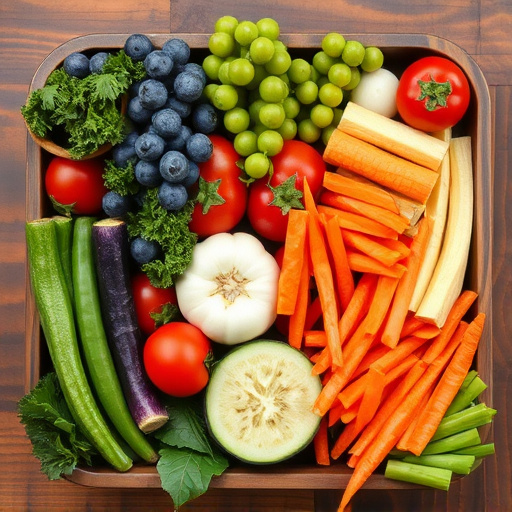Elevate Your Snacking Experience: Tips for Stunning Dip and Chip Platters
Creating stunning dip and chip platters involves choosing the right platter, utensils, and serving d…….
Welcome to an extensive exploration of dip and chip platters, a seemingly simple yet multifaceted concept that has gained significant global attention. This article aims to delve into the various facets of this phenomenon, offering insights for industry professionals, academic researchers, and curious individuals alike. By the end, readers will understand the historical context, international reach, economic implications, technological innovations, regulatory landscape, challenges, and the vast potential of dip and chip platters.
Definition: Dip and chip platters, also known as snack platters or appetizer boards, are curated collections of bite-sized food items designed for dipping into sauces, spreads, or condiments. These platters typically include a variety of raw or cooked vegetables, meats, cheeses, crackers, bread sticks, and other accompaniments.
Core Components:
Historical Context: The concept of dip and chip platters has roots in various cultures worldwide, dating back centuries. Traditional practices in the Middle East, Mediterranean, and Asia involved serving small plates of food with dips, reflecting a focus on communal dining and savoring flavors. Over time, this tradition evolved, blending cultural influences to create modern dip and chip platters as we know them today.
Significance: Dip and chip platters serve multiple purposes:
International Influence: Dip and chip platters have transcended geographical boundaries, gaining popularity worldwide. Their appeal lies in the accessibility of ingredients and adaptability to local tastes:
| Region | Popular Variations | Cultural Significance |
|---|---|---|
| North America | Classic American platter with cheese, crackers, and vegetables; Tex-Mex inspired platters with salsa and tortilla chips | Social gatherings, game nights |
| Europe | Mediterranean-style with hummus, pita, and olives; British cheese boards with crackers | Appetizer culture, after-dinner treats |
| Asia | Japanese izakaya-inspired platters with edamame, gyoza, and wasabi peas; Korean banchan featuring kimchi and various side dishes | Shared dining experiences, complementing main courses |
| Middle East | Mezze boards featuring humus, baba ganoush, and falafel; Moroccan tagine-spiced meats and vegetables | Communal dining, breaking the fast during Ramadan |
Key Trends:
Market Dynamics: The global market for dip and chip platters is experiencing steady growth, driven by rising disposable incomes, changing consumer preferences, and the rise of casual dining experiences. According to a recent report by Market Research Future (MRFR), the North American market is projected to reach USD 12.5 billion by 2027, growing at a CAGR of 4.5% during the forecast period (2020-2027).
Investment Patterns: Restaurants and catering companies are recognizing the potential of dip and chip platters as revenue streams and as a way to enhance customer experiences. This trend has led to increased investment in:
Economic Impact:
Digital Influence: The digital age has had a profound impact on dip and chip platters, transforming how they are created, marketed, and consumed:
Technological Innovations:
Future Potential: Technology will continue to shape the industry:
Key Policies: The regulatory environment surrounding dip and chip platters varies across regions, primarily focusing on food safety, labeling, and health standards:
Legislative Frameworks:
Main Challenges:
Criticisms:
Strategies for Improvement:
Case Study 1: The Mediterranean Touch in NYC
In the bustling culinary scene of New York City, “Mediterranean Bites” emerged as a popular spot for dip and chip platters. This restaurant offered a modern twist on traditional Mediterranean flavors, with dishes like baba ganoush, hummus with pistachios, and grilled vegetable skewers. Their success lay in:
Case Study 2: Sustainable Snacking in Tokyo
Tokyo’s “EcoChip” initiative revolutionized dip and chip platters by focusing on sustainability. They sourced locally grown vegetables, used biodegradable packaging, and offered unique dips with superfoods like quinoa and chia seeds. Their strategy:
Case Study 3: Personalized Platters for Special Events
For special occasions like weddings and corporate events, “Tasteful Touch Catering” in Los Angeles offers customized dip and chip platters. They cater to diverse dietary needs, offering vegan, gluten-free, and nut-free options. Their success hinges on:
Emerging Trends:
Strategic Considerations:
Dip and chip platters have evolved from simple sharing mechanisms to dynamic culinary expressions, reflecting cultural diversity and evolving consumer preferences. The global impact of these platters showcases their ability to bring people together, foster social connections, and create memorable dining experiences. As technology advances and sustainability becomes a priority, the future of dip and chip platters promises exciting possibilities for innovation, personalization, and enhanced customer engagement.
Q: What makes dip and chip platters a healthy choice?
A: Dip and chip platters can be healthy when balanced with whole grains, lean proteins, fresh vegetables, and low-fat dips. Choosing whole food ingredients, controlling portion sizes, and opting for lighter sauces contribute to a nutritious option.
Q: How can I create visually appealing dip and chip displays?
A: Arrange platters symmetrically, ensuring a diverse color palette. Consider layering items to create depth and use serving utensils to guide diners’ eyes. Fresh herbs, edible flowers, and garnishes add visual interest without overwhelming the plate.
Q: Are there any specific storage requirements for dip and chip ingredients?
A: Perishable items like fresh vegetables and meats require refrigeration. Dips and sauces should be stored in airtight containers to maintain freshness. Some ingredients, like crackers and breadsticks, can be stored at room temperature but have shorter shelf lives.
Q: How can I cater to guests with dietary restrictions?
A: Offer a variety of options, including vegan, vegetarian, gluten-free, nut-free, and low-carb choices. Clearly label each platter’s ingredients and provide alternative suggestions for restricted items. Communicate openly with guests to understand their specific needs.
Q: Can dip and chip platters be used for educational purposes?
A: Absolutely! These platters can educate diners about diverse cultures, ingredient origins, and flavor profiles. Providing informative descriptions or hosting interactive workshops can enhance the dining experience and foster cultural appreciation.

Creating stunning dip and chip platters involves choosing the right platter, utensils, and serving d…….

Dip and chip platters are a popular catering choice for events of all kinds due to their interactive…….

Create appealing and inclusive dip and chip platters with a strategic selection of classic and uniqu…….